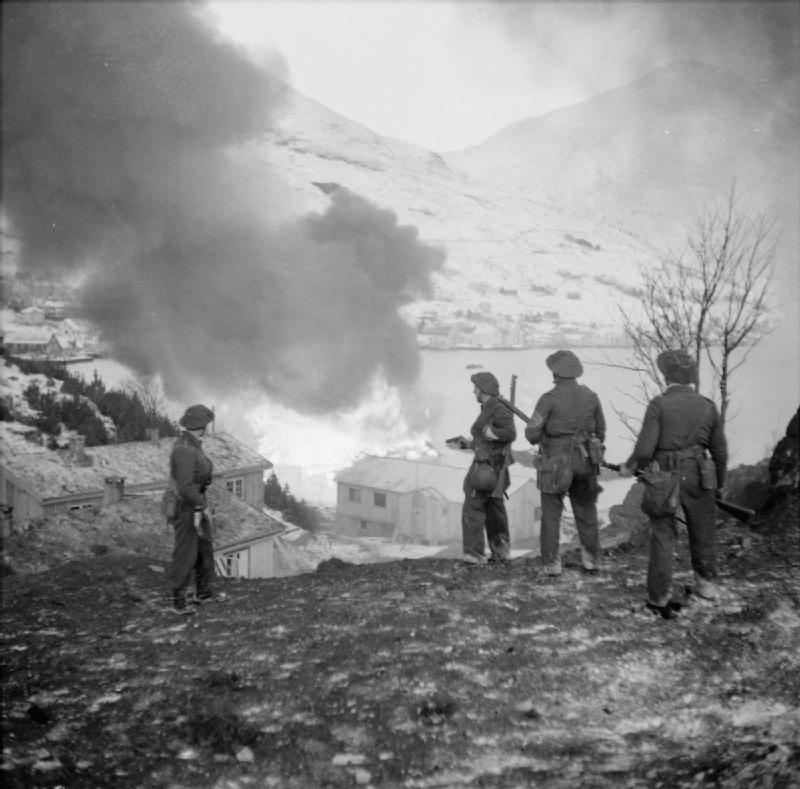|
Wicket Gate
A wicket gate, or simply a wicket, is a pedestrian door or gate, particularly one built into a larger door or into a wall or fence. Use in fortifications Wickets are typically small, narrow doors either alongside or within a larger castle or city gate. The latter were often double gates, large and heavy, designed to allow the passage of wagons, coaches and horsemen. The purpose of wickets was to avoid the risk of having to open the main gates to the castle or city for just one or two individuals on foot. Because the wicket was only one person wide, it only allowed entry one at a time and enabled the guards to better control access. In the Middle Ages the narrow doors in the city walls also enabled late arrivals to gain entry after the main gates had been closed. If the small entrance in the door of a large gate has a high threshold, it may be called a manway. If it is a separate, narrow entrance next to the main gate, it may be called a pedestrian entrance. This type of doub ... [...More Info...] [...Related Items...] OR: [Wikipedia] [Google] [Baidu] |
Sally Port
A sally port is a secure, controlled entry way to an enclosure, e.g., a fortification or prison. The entrance is usually protected by some means, such as a fixed wall on the outside, parallel to the door, which must be circumvented to enter and prevents direct enemy fire from a distance. It may include two sets of doors that can be barred independently to further delay enemy penetration. From around 1600 to 1900, a sally port was a sort of dock where boats picked up or dropped off ship crews from vessels anchored offshore. That meaning occasionally still occurs, especially in coastal Great Britain. Etymology and historical usage The word ''port'' is ultimately from Latin for door. Often the term postern is used synonymously. It can also mean a tunnel, or passage (i.e., a secret exit for those besieged). A ''sally'', ultimately derived from Latin (to jump), or "salle" sortie, is a military maneuver, typically during a siege, made by a defending force to harass isolated ... [...More Info...] [...Related Items...] OR: [Wikipedia] [Google] [Baidu] |
Stile
A stile is a structure or opening that provides people passage over or through a boundary via steps, ladders, or narrow gaps. Stiles are often built in rural areas along footpaths, fences, walls, or hedges that enclose animals, allowing people to move freely. Types In the United Kingdom many stiles were built under legal compulsion (see Rights of way in the United Kingdom). Recent changes in UK government policy towards farming have encouraged upland landowners to make access more available to the public, and this has seen an increase in the number of stiles and an improvement in their overall condition. However stiles are deprecatedBritish Standard BS5709:2018 Gaps Gates & Stiles () and are increasingly being replaced by gates or kissing gates or, where the field is arable, the stile removed. Many legacy stiles remain, however, in a variety of forms (as is also the case in the US, where there is no standard). As well as having a variety of forms, stiles also sometimes include ... [...More Info...] [...Related Items...] OR: [Wikipedia] [Google] [Baidu] |
Penstock
A penstock is a sluice or gate or intake structure that controls water flow, or an enclosed pipe that delivers water to hydro turbines and sewerage systems. The term is inherited from the earlier technology of mill ponds and watermills. Hydroelectric systems and dams Penstocks for hydroelectric installations are normally equipped with a gate system and a surge tank. They can be a combination of many components such as anchor block, drain valve, air bleed valve, and support piers depending on the application. Flow is regulated by turbine operation and is nil when turbines are not in service. Penstocks, particularly where used in polluted water systems, need to be maintained by hot water washing, manual cleaning, antifouling coatings, and desiccation. The term is also used in irrigation dams to refer to the channels leading to and from high-pressure sluice gates. Penstocks are also used in mine tailings dam construction. The penstock is usually situated fairly close to the ... [...More Info...] [...Related Items...] OR: [Wikipedia] [Google] [Baidu] |
Lock (water Transport)
A lock is a device used for raising and lowering boats, ships and other watercraft between stretches of water of different levels on river and canal waterways. The distinguishing feature of a lock is a fixed chamber in which the water level can be varied; whereas in a caisson lock, a boat lift, or on a canal inclined plane, it is the chamber itself (usually then called a caisson) that rises and falls. Locks are used to make a river more easily navigable, or to allow a canal to cross land that is not level. Later canals used more and larger locks to allow a more direct route to be taken. Pound lock A ''pound lock'' is most commonly used on canals and rivers today. A pound lock has a chamber with gates at both ends that control the level of water in the pound. In contrast, an earlier design with a single gate was known as a flash lock. Pound locks were first used in China during the Song Dynasty (960–1279 AD), having been pioneered by the Song politician and naval en ... [...More Info...] [...Related Items...] OR: [Wikipedia] [Google] [Baidu] |
The Pilgrim's Progress
''The Pilgrim's Progress from This World, to That Which Is to Come'' is a 1678 Christian allegory written by John Bunyan. It is regarded as one of the most significant works of theological fiction in English literature and a progenitor of the narrative aspect of Christian media. It has been translated into more than 200 languages and never been out of print. It appeared in Dutch in 1681, in German in 1703 and in Swedish in 1727. The first North American edition was issued in 1681.Lyons, M. (2011). Books: A Living History. Getty Publications. It has also been cited as the first novel written in English. According to literary editor Robert McCrum, "there's no book in English, apart from the Bible, to equal Bunyan's masterpiece for the range of its readership, or its influence on writers as diverse as C. S. Lewis, Nathaniel Hawthorne, Herman Melville, Charles Dickens, Louisa May Alcott, George Bernard Shaw, William Thackeray, Charlotte Bronte, Mark Twain, John Steinbeck a ... [...More Info...] [...Related Items...] OR: [Wikipedia] [Google] [Baidu] |
Allegory
As a literary device or artistic form, an allegory is a narrative or visual representation in which a character, place, or event can be interpreted to represent a hidden meaning with moral or political significance. Authors have used allegory throughout history in all forms of art to illustrate or convey complex ideas and concepts in ways that are comprehensible or striking to its viewers, readers, or listeners. Writers and speakers typically use allegories to convey (semi-)hidden or complex meanings through symbolic figures, actions, imagery, or events, which together create the moral, spiritual, or political meaning the author wishes to convey. Many allegories use personification of abstract concepts. Etymology First attested in English in 1382, the word ''allegory'' comes from Latin ''allegoria'', the latinisation of the Greek ἀλληγορία (''allegoría''), "veiled language, figurative", which in turn comes from both ἄλλος (''allos''), "another, different" ... [...More Info...] [...Related Items...] OR: [Wikipedia] [Google] [Baidu] |
John Bunyan
John Bunyan (; baptised 30 November 162831 August 1688) was an English writer and Puritan preacher best remembered as the author of the Christian allegory ''The Pilgrim's Progress,'' which also became an influential literary model. In addition to ''The Pilgrim's Progress'', Bunyan wrote nearly sixty titles, many of them expanded sermons. Bunyan came from the village of Elstow, near Bedford. He had some schooling and at the age of sixteen joined the Parliamentary Army during the first stage of the English Civil War. After three years in the army he returned to Elstow and took up the trade of tinker, which he had learned from his father. He became interested in religion after his marriage, attending first the parish church and then joining the Bedford Meeting, a nonconformist group in Bedford, and becoming a preacher. After the restoration of the monarch, when the freedom of nonconformists was curtailed, Bunyan was arrested and spent the next twelve years in prison as he refuse ... [...More Info...] [...Related Items...] OR: [Wikipedia] [Google] [Baidu] |
Wicket
In cricket, the term wicket has several meanings: * It is one of the two sets of three stumps and two bails at either end of the pitch. The fielding team's players can hit the wicket with the ball in a number of ways to get a batsman out. ** The wicket is guarded by a batsman who, with his bat (and sometimes with his pads, but see the laws on LBW, leg before wicket), attempts to prevent the ball from hitting the wicket (if it does, he is bowled out) and to score runs where possible. * Through metonymic usage, the dismissal of a batsman is known as the ''taking of a wicket'', * The cricket pitch itself is sometimes referred to as ''the wicket''. History The origin of the word is from wicket gate, a small gate. Originally, cricket wickets had only two stumps and one bail and looked like a gate, much like the wicket used in the North American game of wicket. The third (middle) stump was introduced in 1775, after Lumpy Stevens bowled three successive deliveries to John ... [...More Info...] [...Related Items...] OR: [Wikipedia] [Google] [Baidu] |
Cricket
Cricket is a bat-and-ball game played between two teams of eleven players on a field at the centre of which is a pitch with a wicket at each end, each comprising two bails balanced on three stumps. The batting side scores runs by striking the ball bowled at one of the wickets with the bat and then running between the wickets, while the bowling and fielding side tries to prevent this (by preventing the ball from leaving the field, and getting the ball to either wicket) and dismiss each batter (so they are "out"). Means of dismissal include being bowled, when the ball hits the stumps and dislodges the bails, and by the fielding side either catching the ball after it is hit by the bat, but before it hits the ground, or hitting a wicket with the ball before a batter can cross the crease in front of the wicket. When ten batters have been dismissed, the innings ends and the teams swap roles. The game is adjudicated by two umpires, aided by a third umpire and match referee ... [...More Info...] [...Related Items...] OR: [Wikipedia] [Google] [Baidu] |
Walled Garden
A walled garden is a garden enclosed by high walls, especially when this is done for horticultural rather than security purposes, although originally all gardens may have been enclosed for protection from animal or human intruders. In temperate climates, especially colder areas, such as Scotland, the essential function of the walling of a garden is to shelter the garden from wind and frost, though it may also serve a decorative purpose. Kitchen gardens were very often walled, which segregated them socially, allowing the gardeners, who were usually expected to vanish from the “pleasure gardens” when the occupants of the house were likely to be about, to continue their work. The walls, which were sometimes heated, also carried fruit trees trained as espaliers. Historically, and still in many parts of the world, nearly all urban houses with any private outside space have high walls for security, and any small garden was thus walled by default. The same was true of many rural ... [...More Info...] [...Related Items...] OR: [Wikipedia] [Google] [Baidu] |
Raid (military)
Raiding, also known as depredation, is a military tactic or operational warfare mission which has a specific purpose. Raiders do not capture and hold a location, but quickly retreat to a previous defended position before enemy forces can respond in a coordinated manner or formulate a counter-attack. A raiding group may consist of combatants specially trained in this tactic, such as commandos, or as a special mission assigned to any regular troops. Raids are often a standard tactic in irregular warfare, employed by warriors, guerrilla fighters or other irregular military forces. Some raids are large, for example the Sullivan Expedition. The purposes of a raid may include: * to demoralize, confuse, or exhaust the enemy; * to ransack, pillage, or plunder * to destroy specific goods or installations of military or economic value; * to free POWs * to capture enemy soldiers for interrogation; * to kill or capture specific key persons; * to gather intelligence. Land Tribal societi ... [...More Info...] [...Related Items...] OR: [Wikipedia] [Google] [Baidu] |









